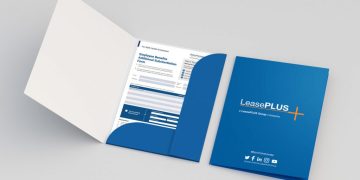Introduction
Flooding can be a devastating natural disaster, leaving behind a trail of destruction and chaos. When the floodwaters recede, the daunting task of cleaning up your property begins. This article will guide you through the process of restoring your home and land to its former state, step by step, using simple sentences to make it easy to understand.
Safety First
Before you start cleaning up after a flood, ensure your safety and that of your family. Check for any structural damage to your home and make sure it’s safe to enter. Turn off the electricity and gas supply to prevent accidents. Wear protective gear like gloves, rubber boots, and masks to guard against contaminated water and debris.
Assess the Damage
The first step in water damage restoration is to assess the extent of the damage. Before you begin cleaning, make sure it’s safe to enter your property. Check for structural damage and electrical hazards. Once it’s safe, document the damage by taking photos or videos for insurance purposes. This documentation will be crucial when filing a claim. Assessing the damage is a critical phase of post-flood recovery. It not only helps you understand the scope of the destruction but also ensures that you prioritize safety. Structural damage, such as compromised walls or a weakened foundation, can pose immediate risks to anyone inside the building. Electrical systems might be damaged or exposed to water, potentially causing fires or electrocution hazards. Before taking any action, it’s crucial to turn off the electricity and gas supply to your property to prevent accidents.
Remove Water and Mud
The first step in the cleanup process is to remove all the water and mud from your property. You can use pumps, buckets, or a wet-dry vacuum to get rid of standing water. Once the water is removed, shovel out the mud and debris left behind. Dispose of it properly, following local regulations.
Clean and Disinfect
After removing the water and mud, thoroughly clean and disinfect all surfaces that came into contact with floodwater. Use a mixture of bleach and water (1 part bleach to 10 parts water) to disinfect. This includes walls, floors, countertops, and any belongings that can be salvaged. Be sure to follow safety guidelines when using bleach.
Remove Damaged Materials
Inspect your property for damaged materials like drywall, insulation, and flooring. These may need to be removed to prevent mold growth and further damage. Cut away and dispose of any wet or moldy materials properly.
Prevent Mold Growth
Mold can quickly become a problem after a flood. To prevent its growth, ensure that your property is well-ventilated and use dehumidifiers to reduce moisture levels. Clean and disinfect any moldy areas with the bleach solution mentioned earlier.
Check Your Electrical System
Before turning your electricity back on, have a qualified electrician inspect your electrical system for damage. Water damage can lead to electrical hazards, so it’s crucial to ensure your home is safe.
Restore Plumbing and Utilities
Check your plumbing and utilities, such as water, gas, and sewer lines. If any of these systems were damaged during the flood, have them repaired by professionals before use.
Inspect Appliances
Examine all appliances that came into contact with floodwater. It’s often best to have them inspected by a professional technician to determine if they can be safely repaired or need replacement.
Repair and Rebuild
Now that your property is clean and safe, it’s time to start repairing and rebuilding. This might involve replacing damaged walls, floors, and other structural elements. It’s essential to follow local building codes and regulations during this process.
Consider Landscaping
If your property includes a garden or yard, you may need to address landscaping issues caused by the flood. This could involve regrading the land, planting new grass, or replacing damaged plants.
Review Your Insurance
Contact your insurance company to review your policy and file a claim for the flood damage. Be prepared to provide the documentation and photos.
Take Preventative Measures
To reduce the risk of future floods, consider taking preventative measures such as elevating your home, installing flood barriers, or landscaping to redirect water flow away from your property.
Seek Emotional Support
Cleaning up after a flood can be emotionally taxing. Don’t hesitate to seek emotional support from friends, family, or professionals if needed. It’s entirely normal to feel overwhelmed during this process.
Stay Informed
Stay informed about local weather and flood warnings to be better prepared for future emergencies. Having an emergency plan in place can make all the difference in minimizing damage.
Conclusion
Water damage restoration after a flood is a challenging but essential task. By following these simple steps, you can gradually restore your home and land to their pre-flood condition. Remember to prioritize safety, document damage for insurance claims, and seek professional help when needed. With patience and determination, you can overcome the aftermath of a flood and rebuild your life.




















